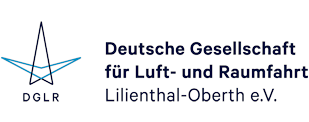DGLR-Publikationsdatenbank - Detailansicht
Autor(en):
J. Eickhoff, B. Chintalapati, P. Stoecker, W. von Kader, R. Traussnig, C. Sayer, R. Peel
Zusammenfassung:
Spacecraft industry is heavily investing in constellation and new business missions, both requiring cost-efficient satellites. While satellites for large constellations are extremely tailored to a particular mission, like the Airbus Arrow platform used for OneWeb, complementary platforms e.g. for in-orbit verification applications need to be highly adaptable to varying customer requirements, instrumentation, orbits and operational concepts. The "Flexible LEO Platform" - FLP2 for short - is a spin-off from the Airbus / University of Stuttgart cooperation during the FLP1 program. It targets towards affordable spacecraft offering a large flexibility in scale and platform/payload interfaces. The key advantage of this platform is its consequent modularity in hardware and software making it suitable for a variety of LEO (Low Earth Orbit) mission scenarios. Payload capacities reach from 25 - 100 kg and from 50 to 300 W average Pwr. The platform is multi-payload capable.
Veranstaltung:
Deutscher Luft- und Raumfahrtkongress 2018, Friedrichshafen
Verlag, Ort:
Deutsche Gesellschaft für Luft- und Raumfahrt - Lilienthal-Oberth e.V., Bonn, 2018
Medientyp:
Conference Paper
Sprache:
englisch
Format:
21,0 x 29,7 cm, 9 Seiten
URN:
urn:nbn:de:101:1-2018121412203053923582
DOI:
10.25967/480157
Stichworte zum Inhalt:
Small Satellite Platform, Scalability in Size, Power, Number of Payloads, LEO Orbits, Modular Avionics Design
Verfügbarkeit:
Download
- Bitte beachten Sie die Nutzungsbedingungen dieses Dokuments: Copyright protected
Kommentar:
Zitierform:
Eickhoff, J.; Chintalapati, B.; et al. (2018): The Flexible LEO Platform for Small Satellite Missions. Deutsche Gesellschaft für Luft- und Raumfahrt - Lilienthal-Oberth e.V.. (Text). https://doi.org/10.25967/480157. urn:nbn:de:101:1-2018121412203053923582.
Veröffentlicht am:
14.12.2018
